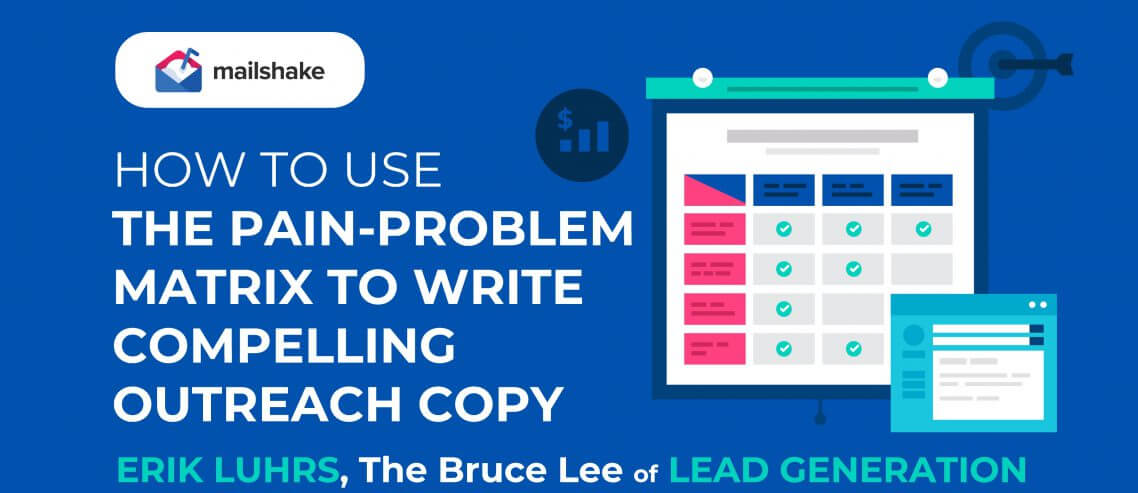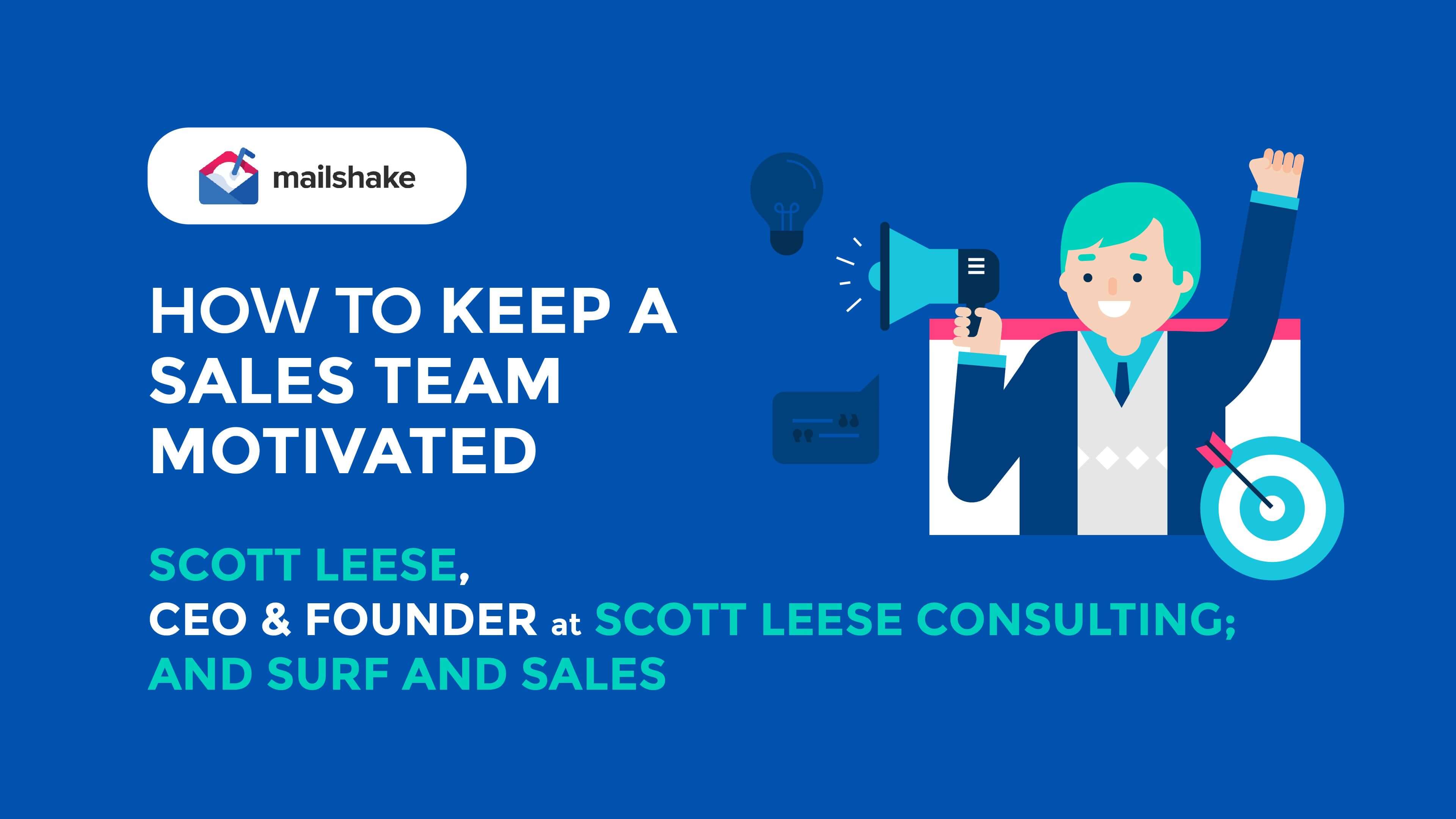How to Use the Pain/Problem Matrix to Write Compelling Sales Copy

Contents
Making your sales copy as compelling as possible has never been more important than it is in these uncertain times. Fortunately, there are plenty of great resources out there that can help – including an interview we did recently with Erik Luhrs, aka, the “Bruce Lee of Revenue Generation.”
Erik uses his background in NLP to help companies develop more effective brands and fully leverage them in their sales processes. His “pain/problem matrix” is a great tool for writing compelling sales copy, as you’ll see in the full interview below:
The GURUS Selling System [1:20]
Erik’s pain/problem matrix comes from his GURUS selling system, which is his methodology for helping salespeople sell more by better leveraging their own subconscious tendencies and the tendencies of their prospects.
The system has five phases: bringing your genuine self (G) to the deal, developing your unique sales persona (U), building rapport (R), establishing a unique buying position (U), and becoming a sales ally (S). The pain/problem matrix is a part of the fourth stage, which helps sellers understand the position clients have to get into in order to want to buy from you.
What Most Salespeople Get Wrong About the Unique Buying Position [5:10]
According to Erik, a lot of salespeople think about sales the same way they think about fitting a peg into a hole. They’re thinking, “should I make it round? should I make it square?” But often, we fail to look at the hole and how it got that way.
But that’s a mistake, he says. “Your buyers are going through their own journey. If you approach things by trying to solve their problems, you negate the emotional experience that the prospect is going through.”
Instead, Erik recommends spending some time understanding the different levels of problems your prospects are facing. There are circumstantial problems, such as “I can’t find a parking spot.” But then there are bigger problems that affect prospects on a deeper level. For instance, being unable to find a parking spot might mean missing a meeting, missing a meeting might mean losing out on a deal, and so on.
While they’re easy to tease apart logically from the outside, Erik suggests that, for prospects, they’re all mushed together. That’s why it isn’t enough to tell people that you can solve their problems. Instead, you have to understand where the buyer is and be able to pull the pieces apart so that you can see the whole picture in order to move forward.
How to Identify Your Prospect’s Pain Points [8:22]
In Erik’s experience, research – such as looking for relevant Reddit threads to understand the challenges prospects are facing – gives you a good base, but it doesn’t go far enough.
That’s where the pain/problem matrix comes in. Erik defines pain points on a spectrum falling from Level 1 pain to Level 10 pain. As an example, he describes, “If I’m talking to a VP of Sales, a Level 1 pain might be, ‘I need to make more sales.’” At the higher end, “A Level 10 pain might be, ‘I’m afraid my wife is going to leave me if I don’t make enough sales, because I won’t get the commission I need to make to buy her the things she likes.’”
To be effective at sales, you need to be selling to something around a Level 5 pain. According to Erik, “Level 1 pain is too shallow. Anyone can go out and say, ‘I’m going to help you make more sales.’” Selling to a Level 10 pain, on the other hand, usually feels too personal or too weird in real life.
Instead, Erik recommends getting to the Level 5 pain by asking “why” questions and digging deeper. Starting with the Level 1 pain of needing to make more sales could lead to something like the following sequence:
- “I need to make more sales.” Ok, why?
- “My salespeople don’t seem motivated.” Ok, why?
- “They don’t feel like they have a good opening line.” Ok, why?
- “Marketing isn’t doing its job.” Ok, so what do you need?
- “I need my salespeople to be more creative on the fly, because marketing isn’t going to save us.”
From that, Erik would make a pitch like: “Hey, is your marketing department letting you down or not opening up enough doors for you, and now the heavy lifting has to be done by your salespeople, who have to be more creative on the fly with prospects? Is that something that’s a problem for you?”
He explains, “They’ll pay attention to that, because subconsciously, everybody has a dialogue going on in their head. If you can find the words or the language patterns that are common at that level across the sales spectrum and create messaging around it, you’re going to get a huge response. The subconscious is looking for something in the exterior world that validates what it’s thinking about. It’s about finding those phrases that are going to capture attention.”
How to Turn Your Pain/Problem Matrix Into Messaging [15:18]
Once you’ve figured out the language patterns that are going to get attention, you can incorporate them into your messaging. Erik gives a few examples:
- If you’re sending an email, you lead with it in your subject line, “Are you looking for more creativity from your salespeople?”
- If you’re leaving a voicemail, you can say, “Hi John, my name is Eric, I work with creativesalespeople.com and what we do is train people to be more creative in their sales presentations and on the fly.”
That said, he also advises that, while your messaging might work well as your opening line, you also need to present the problem. Continuing with the example above, Erik recommends saying something like, “We know you’re looking for creative salespeople. We know the reason they’re not creative is you’ve been depending on marketing. We know marketing has let you down. But there’s a way to make your salespeople more creative. We have systems and training processes – let’s have a phone call to discuss.”
Ultimately, getting attention is 85% of success, Erik argues. Once you have it, practice holding prospects’ attention until you get to the end of the pitch, where you present an offer that’s aligned with your opening statement – and the needs you’ve identified through the pain/problem matrix.





